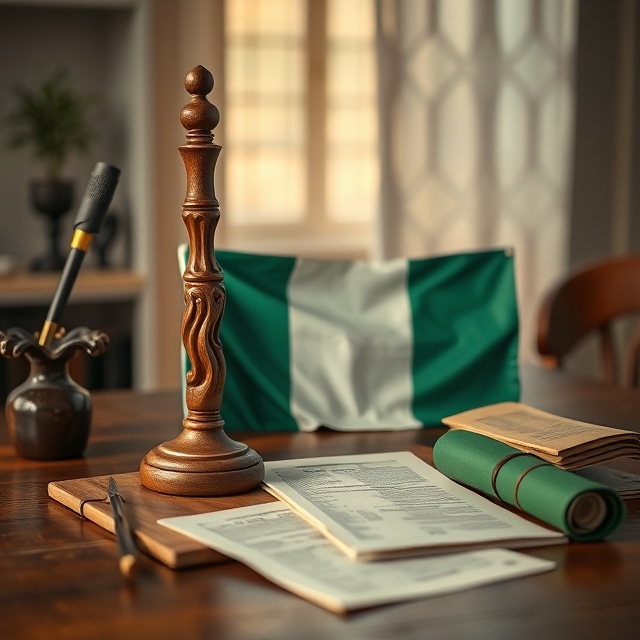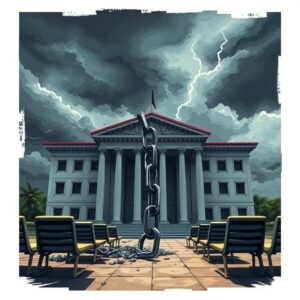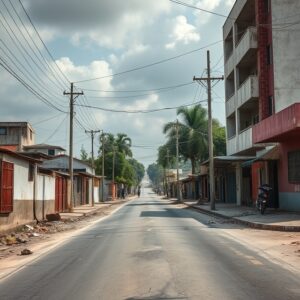The Hidden Heroes of Nigeria’s Independence Movement

Traditional Nigerian artifact surrounded by independence-era elements, representing the hidden efforts behind Nigeria’s freedom - AI Image
The Hidden Heroes of Nigeria’s Independence Movement
The story of Nigeria’s independence is often celebrated with mentions of prominent figures like Nnamdi Azikiwe, Obafemi Awolowo, and Ahmadu Bello. Yet beneath the surface of these visible movements were lesser-known figures and groups whose efforts paved the way for the country to gain its freedom. They weren’t always in the spotlight, but their behind-the-scenes contributions were instrumental in shaping Nigeria’s path to sovereignty.
One such figure was Herbert Macaulay, often referred to as the “Father of Nigerian Nationalism.” His activism laid the groundwork for future movements. Alongside him was Nnamdi Azikiwe, whose Pan-Africanist views anchored Nigerian activism, but their work would not have seen such success without the involvement of numerous strategists, politicians, and administrators whose contributions are lesser-known but fundamental.
Herbert Macaulay and other members of the Nigerian Youth Movement (NYM) worked tirelessly to establish relationships between Nigeria and other emerging movements in Africa. Their ability to navigate the British colonial systems was remarkable. While Azikiwe and others led the visible protests, Macaulay focused on using dialogue and diplomacy to press for change. His presence was rarely overt but always impactful, building bridges between political factions, regional groups, and leaders in various Nigerian communities.
Members of the Nigerian Youth Movement (NYM), like Ernest Ikoli and H.O. Davies, ensured that movements didn’t only rely on public protests or visible campaigns. Their strength was in aligning different ethnic groups and political movements, bringing unity to the diverse nationalist groups pushing against colonial rule. They had a talent for negotiation, and their methods avoided the more confrontational means of other activists. Their skill was vital during delicate moments of coordination when ethnic rivalries threatened to undermine the unified vision of Nigerian independence.
The NYM played a major role in empowering workers, students, and grassroots movements through collective action. Their activism focused on empowering these groups through collective action. While Macaulay was a vocal critic of the British colonial system, many of the NYM members worked behind the scenes to disseminate anti-colonial propaganda and build a foundation for future campaigns.
The British administration, wary of these rising movements, began to tighten its grip on Nigeria. Colonial officials arrested activists, restricted public gatherings, and clamped down on student movements. Despite the pressure, members of the Nigerian nationalist leadership—like the leadership of the NYM—pushed forward. These underground networks formed a system of communication, with coded messages sent between leaders, encouraging widespread organization without being vulnerable to colonial suppression.
Their approach involved forming intellectual alliances with the United Nations and other organizations sympathetic to the Pan-African cause. Their role wasn’t solely nationalistic; it was also diplomatic. They worked to bring Nigeria’s story to the international stage, reaching out to key institutions and leaders to argue that Nigeria should have its independence by the mid-20th century. Their leadership, though quiet, carried weight because it was diplomatic, focused on development and reforms rather than violence.
The Nigerian leadership of the 1940s and 1950s focused on nonviolent paths to independence through structured and disciplined strategies. Key leaders like Sir Ahmadu Bello, Obafemi Awolowo, and Nnamdi Azikiwe brought regional diversity into the fold, ensuring that their goals of independence didn’t simply focus on urban areas but sought widespread grassroots participation. Each leader had their strategy, but behind their approaches were the efforts of planners who understood the nuances of regional politics and British colonial resistance.
The introduction of regional governance structures by the British during the colonial administration was another turning point. While these strategies sought to divide the Nigerian population through regional differences, it was these same divisions that activists like those in the NYM turned into a framework for national unity. By leveraging meetings, conferences, and building trust with local and regional groups, they avoided falling into traps of division. They understood that divisions based on ethnicity or geography would only benefit colonial officials trying to divide and conquer.
Throughout these negotiations and movements, communication remained critical. Confidential letters passed between groups, strategies laid out in coded terms to maintain secrecy from British colonial officials, and trust was maintained through shared visions of a united and independent Nigeria. These strategies were not spontaneous but deliberate efforts from leaders who understood that successful independence required more than just protests in the streets or rallies at political meetings.
Their work wasn’t just national—it extended into the Pan-African movement itself. They linked Nigeria’s independence with the broader movement for African sovereignty across the continent. Their analysis showed that Nigeria’s path could be achieved without reliance on violence. Their efforts resulted in building coalitions with other movements like those in Ghana and Egypt, leveraging international pressure as part of the strategy to resist British rule. These intellectual efforts created a diplomatic framework that supported Nigeria’s eventual self-governance.
Their role was one of direct organization and mobilization at the grassroots level. They spent countless hours engaging with student leaders, local organizers, and activist groups to ensure that the public remained energized and aligned with their vision. Their ability to balance these relationships, even during times of division and doubt, proved invaluable. Their legacy remained clear: activists and leaders were strongest when they could unite across divides and focus on a shared vision of freedom.
When Nigeria finally gained independence in 1960, the public celebrated the visible names: Nnamdi Azikiwe, Obafemi Awolowo, and others. But the groundwork laid by these quieter strategists remained largely unrecognized. The leaders and organizers continued their roles in post-independence Nigeria. Their leadership paved the way for a unified and peaceful path toward self-governance.
Their story wasn’t written in bold headlines, nor were they the first names to come to mind when reflecting on Nigeria’s freedom. Yet their actions—network building, strategic diplomacy, grassroots organizing, and quiet negotiations—ensured that Nigeria would eventually stand as an independent nation. They understood that freedom wasn’t just about visible demonstrations. It was about creating pathways that worked even when the world wasn’t watching. And so their story continues, not in the grandiose speeches, but in the steady foundations of governance and independence that modern Nigeria rests on.
The efforts of the Nigerian Youth Movement and other strategic groups fought their battles in rooms, meetings, and quiet discussions rather than in the public squares, leaving a powerful yet unseen mark on Nigeria’s independence. Their names, while not celebrated on national stages, will always remain part of the fabric of the Nigerian story.
Their efforts were the bridge between ambition and freedom, and their legacy proves that every freedom, every movement, is built not only by the people in the spotlight but also by the quiet hands working in the shadows.





